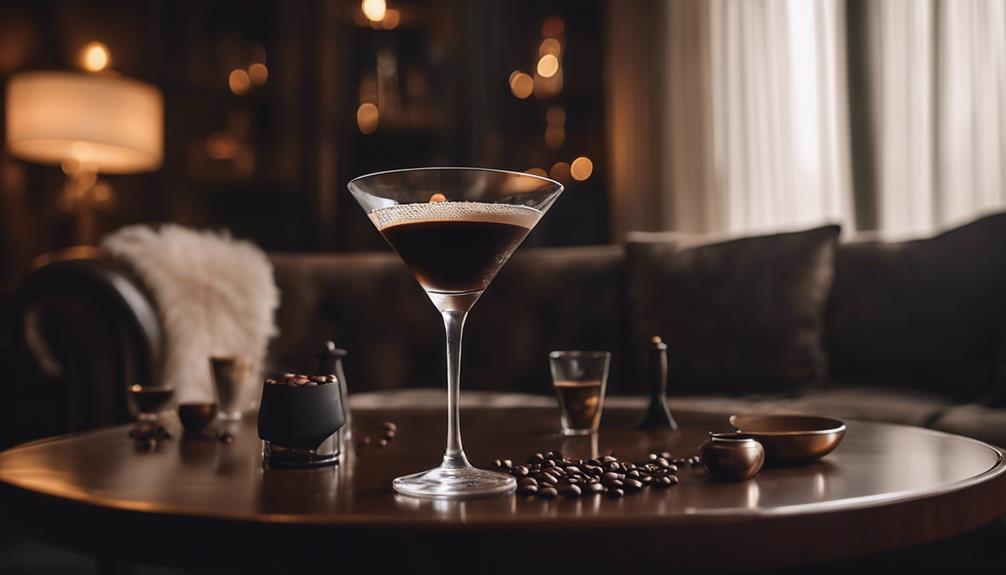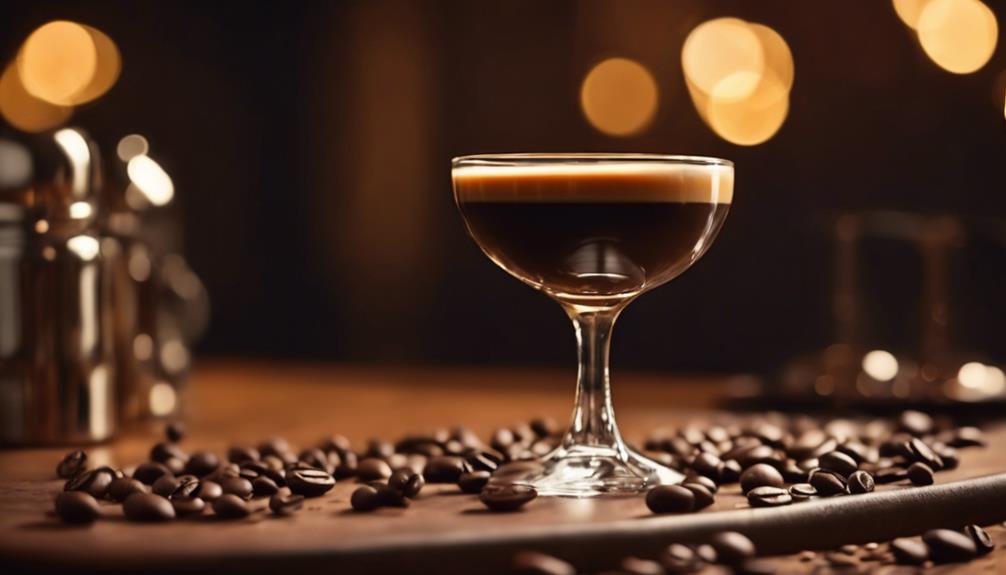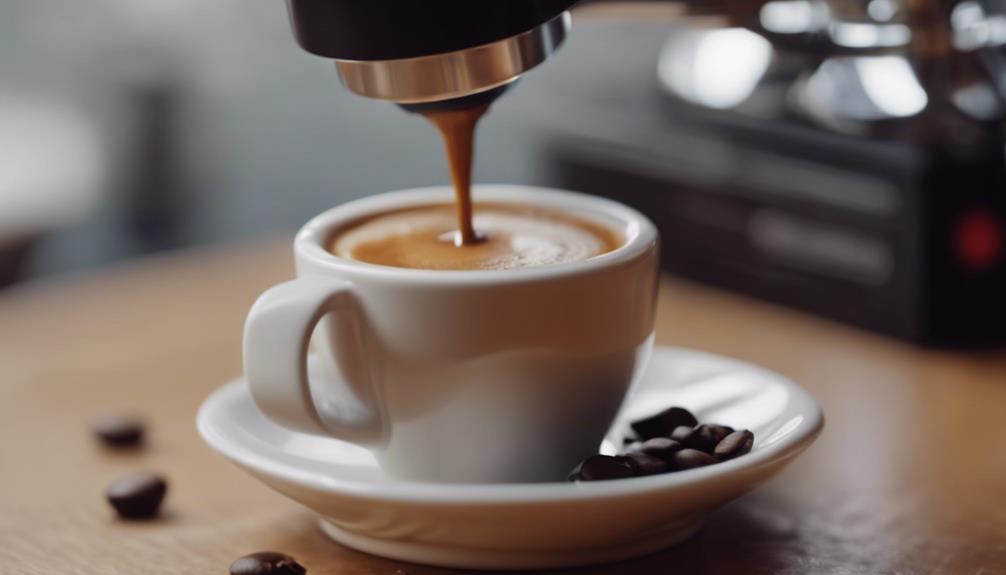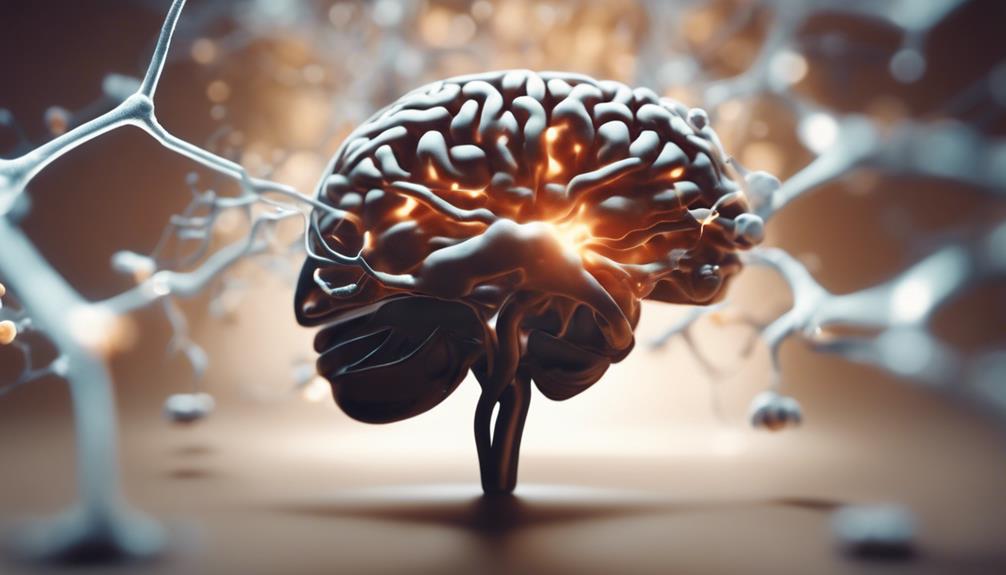You can replicate the luxurious scent of a trendy coffee shop in your own home with an espresso martini candle, skillfully blending the rich aromas of freshly brewed espresso, hazelnut, and creamy undertones to establish a warm and welcoming ambiance. This candle’s special combination captures the spirit of a coffee haven, perfect for unwinding and relaxing after a hectic day. Featuring an eco-friendly design, a reusable glass martini glass, and sustainable soy wax, you will not only pamper your senses but also contribute to a more environmentally conscious lifestyle. As you delve into the world of coffee-infused candles, you will uncover more ways to enhance your coffee experience at home.
Key Takeaways
- This candle combines espresso, hazelnut, and maple cream for a rich, inviting aroma reminiscent of a chic cocktail lounge.
- The eco-friendly design features a reusable glass martini glass, promoting sustainability and reducing waste.
- With a 35-hour burn time, you can enjoy the cozy ambiance and relaxing atmosphere created by the candle's soft, glittery light.
- The unique scent profile is achieved through a blend of high-quality wax, liquid dyes, and fragrance oils, capturing the essence of a classic espresso martini.
Crafting the Perfect Scent
To craft the perfect scent for your Espresso Martini Candle, you'll want to carefully balance a rich blend of aromatic ingredients that evoke the essence of a freshly brewed espresso martini. The key to achieving this lies in combining the right notes to create a scent profile that's both inviting and rich.
For your Espresso Martini Candle, you'll want to focus on a blend of espresso, hazelnut coffee, and maple cream. These notes will work together to create a fragrance that's reminiscent of a freshly brewed espresso martini.
As you craft your scent, remember that the heart notes of medium roast coffee, toasted hazelnut, and coconut will complement the base notes of cream, maple, and vanilla. This combination will result in a creamy sweetness that enhances the overall fragrance of your Espresso Martini Candle.
Essential Supplies and Tools
You'll need the right materials to bring your Espresso Martini Candle to life, and that starts with selecting the perfect combination of wax, color, and fragrance. To evoke the aroma of freshly brewed espresso, you'll require specific supplies to create an authentic coffeehouse experience.
Here are the vital items you'll need:
- Cocopro container wax as the base
- Liquid dyes in brown, black, and a small amount of yellow for coloring
- A suitable wick selected based on the width of the jar
- A sturdy clear glass jar or an old jam jar as the candle vessel
Remember to secure the wick to the bottom of the jar using a wick sticker or glue dot for stability during the pouring process.
Accurately measuring wax and fragrance oil is essential for achieving the desired scent throw and candle quality.
With these vital supplies, you'll be well on your way to crafting an Espresso Martini Candle that captures the essence of a rich, bold cup of coffee.
Bringing the Coffeehouse Home
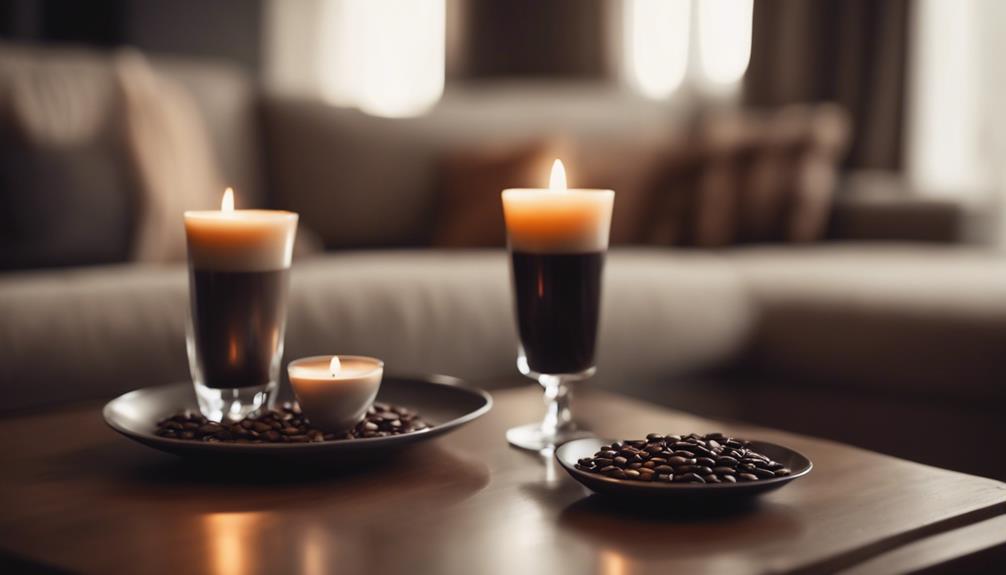
As you light the Espresso Martini Candle, the rich aroma of freshly brewed espresso envelops your space, instantly transporting you to a cozy coffeehouse atmosphere. You'll feel like you're sitting in your favorite café, surrounded by the comforting scent of espresso. This candle is designed to bring the coffeehouse experience to your home, and it delivers.
Here's what makes this candle stand out:
| Feature | Benefit | Result |
|---|---|---|
| Rich espresso aroma | Cozy coffeehouse atmosphere | Instant relaxation |
| Real Arabica coffee beans on top | Enhanced visual appeal | Stylish decor piece |
| 35-hour burn time | Extended enjoyment | Less frequent replacements |
With its eco-friendly soy wax and chic design inspired by the popular espresso martini cocktail, this candle is a must-have for coffee lovers. Whether you're looking to create a cozy reading nook or a stylish gathering space, the Espresso Martini Candle is the perfect addition to your home. So go ahead, light it up, and bring the coffeehouse home!
Designing a Unique Ambiance
With its sleek design and rich espresso aroma, this candle becomes a statement piece that elevates your space and crafts a unique ambiance that's perfect for relaxing or entertaining. You'll feel like you're sipping on a decadent espresso martini, minus the caffeine.
Here are four ways this candle helps you design a unique ambiance:
- Sophisticated decor: The candle's martini glass design adds a touch of sophistication to any room, making it perfect for dinner parties or cozy nights in.
- Cozy ambiance: When lit, the candle's soft, glittery light creates a warm and inviting atmosphere that's sure to make you feel relaxed and at ease.
- Sensory experience: The rich aroma of freshly brewed espresso wafts through the air, transporting you to your favorite coffee shop or lounge.
- Elegant centerpiece: The reusable glass and premium soy wax make this candle a beautiful centerpiece for any coffee-themed gathering or celebration.
The Art of Coffee-Infused Candles
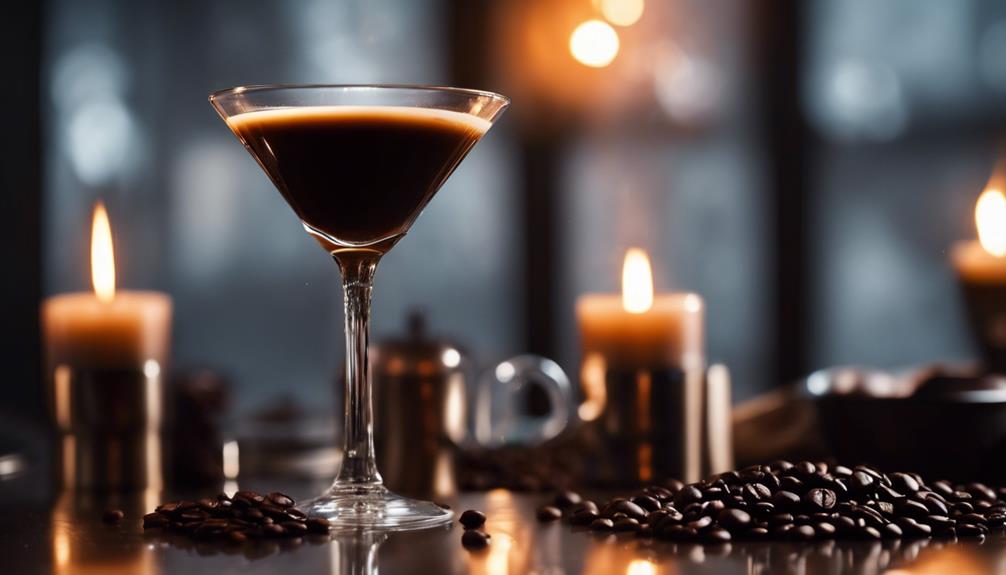
As you explore the art of coffee-infused candles, you'll discover a range of coffee-inspired fragrance options that evoke the richness of a freshly brewed cup.
You'll learn about the specialized candle making techniques used to capture the essence of coffee, from selecting premium ingredients to achieving the perfect wick size.
Coffee-Inspired Fragrance Options
You step into a world of rich aromas and inviting ambiance when you explore coffee-inspired fragrance options, expertly blended to evoke the essence of your favorite coffeehouse.
Imagine the aroma of freshly brewed coffee filling the air, transporting you to a cozy morning moment. Coffee-infused candles, like the Espresso Martini Candle, capture this essence with notes of hazelnut and cream, creating a warm and welcoming atmosphere.
When it comes to coffee-inspired fragrance options, you'll find a range of blends that tantalize your senses. Here are a few highlights:
- Arabica Coffee: High-quality Arabica coffee grounds are often used to enhance the fragrance and provide a connection to the coffee experience.
- Roasted Coffee: Rich, bold notes of roasted coffee add depth to the scent profile.
- Toasted Hazelnut: Nutty, toasted hazelnut notes complement the coffee aroma, creating a smooth and balanced blend.
- Vanilla: Sweet, creamy vanilla notes round out the scent profile, adding a touch of warmth and comfort.
These expertly blended fragrances will transport you to your favorite coffeehouse, wherever you may be.
Candle Making Techniques Used
Crafting an Espresso Martini Candle requires meticulous attention to detail, starting with the selection of the right wax to provide a sturdy base for the coffee-infused masterpiece.
You'll want to choose a high-quality wax, such as Soy Wax, that can hold the fragrance and color well. Next, you'll need to blend the perfect shade of brown, black, and yellow liquid dyes to achieve the rich, espresso tone. Accurate measurements are vital, so make certain to weigh the wax equivalent to the volume of water, applying a conversion factor of approximately 0.86 for ideal results.
During the pouring process, a wick centering tool is essential to guarantee even distribution of wax and stability for the wick. This will ultimately enhance the candle's performance and prevent hot spots.
Finally, you'll add a foam layer with embedded coffee beans, which not only adds visual appeal but also maintains the scent profile associated with espresso martinis.
Espresso Martini Aesthetic
In the world of coffee-infused candles, the Espresso Martini Candle stands out with its sophisticated aesthetic, perfectly capturing the essence of a rich and decadent espresso martini.
You'll be drawn to its deep espresso hue and chic glass container, which elevates your home decor with its sleek design.
The Espresso Martini Candle's unique scent profile combines rich espresso, toasted hazelnut, and creamy maple notes, creating an inviting atmosphere reminiscent of a cozy coffee shop or cocktail lounge.
Here are some key features that contribute to its espresso martini aesthetic:
- Deep espresso hue: The candle's rich color evokes the essence of a classic espresso martini.
- Chic glass container: The reusable glass martini glass adds a touch of sophistication to any room.
- Real Arabica coffee beans: The candle incorporates real coffee beans for added visual appeal and authenticity.
- Sustainable design: The reusable glass container promotes sustainability and can be repurposed after the candle has been fully enjoyed.
With its sophisticated design and inviting scent, the Espresso Martini Candle is perfect for coffee lovers and those looking to elevate their living spaces.
Enjoying Your New Coffee Oasis
As you step into your newly created coffee oasis, the Espresso Martini Candle's rich aroma envelops you, transporting you to a chic cocktail lounge. The scent of freshly brewed espresso fills the air, and you can't help but relax and unwind.
To guarantee a safe and enjoyable experience, remember to place the candle on a heat-resistant plate or container, and never leave it unattended. Trim the wick to about 1/4 inch to promote an even burn and prevent excessive soot.
As you bask in the warm, inviting atmosphere, take a moment to appreciate the reusable glass martini glass that holds the candle. Not only is it a beautiful decorative piece, but it's also an eco-friendly touch, allowing you to repurpose it after use.
If you took the time to cure the candle for one to two weeks before lighting, you'll be rewarded with an even more intense fragrance experience. Now, sit back, relax, and indulge in the rich aroma of your Espresso Martini Candle – your new coffee oasis awaits!
Frequently Asked Questions
How to Add Coffee Scent to Candle?
When adding a coffee scent to your candle, you'll want to use high-quality fragrance oil, guarantee the right fragrance load, and consider adding real coffee grounds for an enhanced aroma and texture.
Is It Safe to Put Coffee Grounds in Candles?
You're wondering if it's safe to add coffee grounds to candles. Yes, it is, as long as you distribute them evenly, don't overdo it (10-15% of wax weight), and choose the right wick to guarantee a consistent, safe burn.
Can You Put Instant Coffee in Candles?
As you pour steaming hot coffee, imagine the aroma infusing your candle. While you can put instant coffee in candles, it may not dissolve completely, affecting the texture and burn quality, so use it in moderation and combine with fragrance oils for ideal results.
Do Coffee Candles Keep You Awake?
You might think coffee candles would keep you awake, but surprisingly, they won't. The soothing scent of coffee can actually calm you down, reduce stress, and improve your mood, making it perfect for a relaxing atmosphere.
Conclusion
As you light your espresso martini candle, the aroma of freshly brewed coffee envelops you, transporting you to a cozy coffeehouse on a crisp morning.
It's like being wrapped in a warm hug on a chilly day. Your senses come alive, and your home is transformed into a vibrant oasis, perfect for relaxation or entertaining.
With every flicker, the scent of rich espresso and creamy sweetness wafts through the air, making your space feel like a luxurious retreat.
